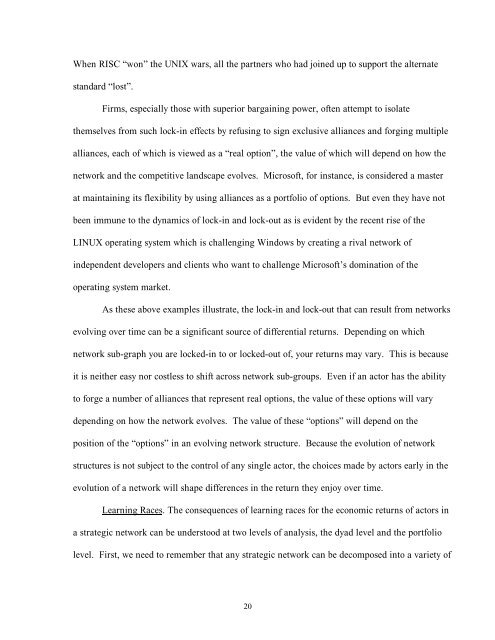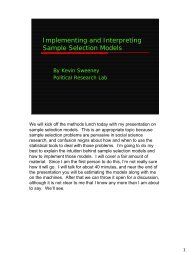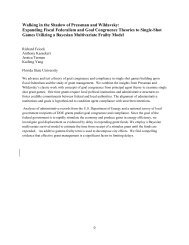STRATEGIC NETWORKS Ranjay Gulati, Nitin Nohria, Akbar Zaheer ...
STRATEGIC NETWORKS Ranjay Gulati, Nitin Nohria, Akbar Zaheer ...
STRATEGIC NETWORKS Ranjay Gulati, Nitin Nohria, Akbar Zaheer ...
Create successful ePaper yourself
Turn your PDF publications into a flip-book with our unique Google optimized e-Paper software.
When RISC “won” the UNIX wars, all the partners who had joined up to support the alternatestandard “lost”.Firms, especially those with superior bargaining power, often attempt to isolatethemselves from such lock-in effects by refusing to sign exclusive alliances and forging multiplealliances, each of which is viewed as a “real option”, the value of which will depend on how thenetwork and the competitive landscape evolves. Microsoft, for instance, is considered a masterat maintaining its flexibility by using alliances as a portfolio of options. But even they have notbeen immune to the dynamics of lock-in and lock-out as is evident by the recent rise of theLINUX operating system which is challenging Windows by creating a rival network ofindependent developers and clients who want to challenge Microsoft’s domination of theoperating system market.As these above examples illustrate, the lock-in and lock-out that can result from networksevolving over time can be a significant source of differential returns. Depending on whichnetwork sub-graph you are locked-in to or locked-out of, your returns may vary. This is becauseit is neither easy nor costless to shift across network sub-groups. Even if an actor has the abilityto forge a number of alliances that represent real options, the value of these options will varydepending on how the network evolves. The value of these “options” will depend on theposition of the “options” in an evolving network structure. Because the evolution of networkstructures is not subject to the control of any single actor, the choices made by actors early in theevolution of a network will shape differences in the return they enjoy over time.Learning Races. The consequences of learning races for the economic returns of actors ina strategic network can be understood at two levels of analysis, the dyad level and the portfoliolevel. First, we need to remember that any strategic network can be decomposed into a variety of20




